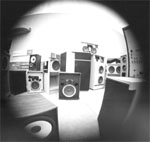Over time, you will have to re-bias your tubes, how much and when depends on how much and how hard you use your tube amp! Eventually tubes need to be replaced, you can hear when the tubes are shot, at the end of their lifespan they make noise, called Tube Roar, sounds like noise!




 Reply With Quote
Reply With Quote Steve: Remember when I said "snake oil
Steve: Remember when I said "snake oil  ?, I have not heard anything better than M Levinson or Krell, even moneywise, I do not want to spend that money, so I´m happy with a Crown K2, a Sony N77ES, and an N80ES.
?, I have not heard anything better than M Levinson or Krell, even moneywise, I do not want to spend that money, so I´m happy with a Crown K2, a Sony N77ES, and an N80ES.





